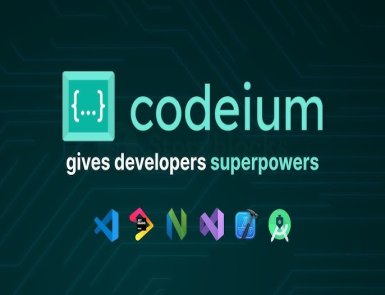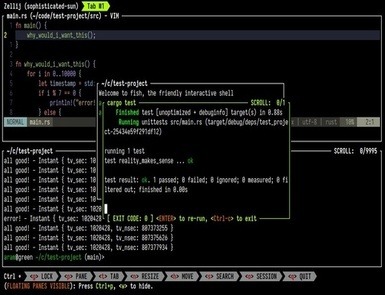In the dynamic landscape of artificial intelligence, where breakthroughs occur in rapid succession and the boundaries of what’s possible are constantly pushed, the Keras framework has emerged as a steadfast companion for machine learning practitioners and researchers.
With the advent of Keras Core 3.0, the framework embarks on a transformative journey, poised to redefine the very essence of capabilities, performance, and adaptability, and solidify its position as a trailblazer in the realm of deep learning. This article delves into the evolution of Keras, highlights the remarkable features of version 3.0, and explores its compatibility with various backends.
Understanding Keras — A Journey from Inception to Innovation
Keras, born from the visionary mind of François Chollet in 2015, swiftly rose to prominence as a high-level neural networks API known for its intuitive design and unparalleled experimentation agility. Its initial incarnation and subsequent integration with TensorFlow marked a pivotal moment, propelling Keras into the limelight of machine learning tools.
As the AI landscape evolved, Keras adapted in tandem, shaping itself to meet the diverse demands of an ever-expanding user community. Now, with the unveiling of Keras Core 3.0, this evolutionary saga culminates in a symphony of enhancements that not only elevate the framework’s capabilities but also redefine its role as an indispensable asset in the arsenal of AI practitioners.
Redefining Possibilities — Unveiling Keras 3.0’s Game-Changing Features
Embracing the Multi-Backend Landscape
Keras 3.0 emerges as a trailblazer with its unprecedented support for multiple backends. While its roots are anchored in TensorFlow, this version casts a wider net, inviting frameworks like jAX and PyTorch into its fold.
The result? A harmonious coexistence that empowers researchers and practitioners to wield their preferred framework without renouncing the prowess of Keras.
Precision Perfected — Advanced Performance Optimization
Keras Core 3.0 doubles down on performance optimization, seamlessly weaving techniques like mixed-precision training and distributed training into its fabric. The result is a turbocharged training process and maximized hardware resource utilization.
These optimization strategies work behind the scenes, enabling users to focus on the art of model development and experimentation, confident that the framework is orchestrating the complex ballet beneath.
Expanding the Horizons — A Flourishing Ecosystem
The Keras ecosystem flourishes with renewed vigour in Keras 3.0. The framework’s enhanced support for KerasCV and KerasNLP, specialized libraries tailored for computer vision and natural language processing, empowers it to excel in these domains.
This synergy doesn’t just streamline the development process; it equips users with an extensive toolkit to conquer the intricate challenges inherent in these fields.
Uniting the Diverse — Cross-Framework Compatibility
Keras Core 3.0 ushers in an era of harmony across deep learning frameworks. Models crafted in Keras effortlessly traverse the boundaries between TensorFlow, jAX, and PyTorch backends, reflecting a unification in an ecosystem historically divided.
This seamless compatibility erases barriers, fostering an environment of collaboration and experimentation, where diverse tools coalesce to drive innovation.
Evolution by Design — The Philosophy of Progressive Disclosure
Keras 3.0 embodies the ethos of progressive disclosure, catering to both novices and seasoned practitioners. The API unfolds in a manner that facilitates the gentle onboarding of newcomers while gradually unveiling the advanced features craved by experts.
This balanced approach ensures Keras remains accessible and indispensable, irrespective of users’ proficiency levels.
A Stateless Symphony of Design — The Stateless API Paradigm
The introduction of the stateless API marks a paradigm shift in Keras 3.0. Aligned with the trend of integrating functional programming concepts in deep learning, this design choice fosters modular architecture, encourages code reusability, and champions clean code organization.
This leap not only elevates the development experience but also fortifies code maintenance and collaborative prowess.
Navigating the Possibilities — Keras for TensorFlow, jAX, and PyTorch
Embarking on the Voyage: Installation
Embarking on the journey with Keras Core 3.0 is an effortless endeavour. Installation guides for each supported backend are readily available in the official documentation, providing users the freedom to opt for the backend that resonates with their ethos and project requisites.
This adaptability cements Keras as an indispensable entity amid the ever-shifting currents of AI technology. For installation,
$ pip install keras-core
import keras_core as keras
Aligning with the Core: Backend Configuration
Configuring the backend is a seamless ritual, often requiring a mere few lines of code. This configuration determines the engine propelling Keras—be it TensorFlow, jAX, or PyTorch.
This flexibility empowers users to fluidly transition between backends, paving the way for efficient exploration and experimentation. Run the following command for backend configuration:
$ export KERAS_BACKEND="jax"
$ python train.py
Or
$ KERAS_BACKEND=jax python train.pyMastery in Action: Integrating KerasCV and KerasNLP
The integration of KerasCV and KerasNLP into Keras Core 3.0 paints a transformative landscape. KerasCV brings forth a symphony for computer vision tasks, providing dedicated APIs and pre-fabricated models for image classification, object detection, and segmentation.
Meanwhile, KerasNLP empowers users to navigate the challenges of natural language processing with access to cutting-edge language models, tokenization tools, and sequence manipulation layers. And here is some KerasCV usage example:
import keras_cv
import keras_core as keras
filepath = keras.utils.get_file(origin="https://i.imgur.com/gCNcJJI.jpg")
image = np.array(keras.utils.load_img(filepath))
image_resized = ops.image.resize(image, (640, 640))[None, ...]
model = keras_cv.models.YOLOV8Detector.from_preset(
"yolo_v8_m_pascalvoc",
bounding_box_format="xywh",
)
predictions = model.predict(image_resized)
A Confluence of Innovation:
In the ever-accelerating tapestry of deep learning, Keras Core 3.0 emerges as a beacon of innovation and adaptability. With its embrace of multiple backends, advanced performance optimization, amplified ecosystem, cross-framework harmony, philosophy of progressive disclosure, and the advent of the stateless API, Keras 3.0 redefines itself as the quintessential deep learning API.
It resonates across the spectrum of users—novices venturing forth and experts charting the boundaries of possibility. As the grand symphony of deep learning unfolds, Keras Core 3.0 remains a steadfast companion, empowering developers to manifest their visions with unmatched finesse and precision.










